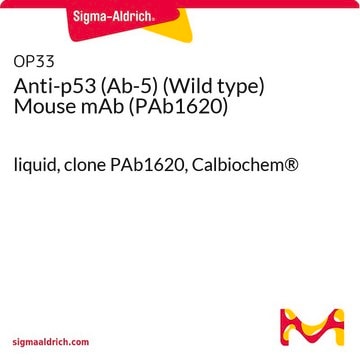Recommended Products
biological source
rabbit
Quality Level
antibody form
purified antibody
antibody product type
primary antibodies
clone
polyclonal
species reactivity
human
packaging
antibody small pack of 25 μg
manufacturer/tradename
Upstate®
technique(s)
immunoprecipitation (IP): suitable
western blot: suitable
isotype
IgG
NCBI accession no.
UniProt accession no.
shipped in
dry ice
target post-translational modification
unmodified
Gene Information
human ... LCK(3932)
General description
Tyrosine-protein kinase Lck (UniProt: P06239; also known a EC:2.7.10.2, Leukocyte C-terminal Src kinase, LSK, Lymphocyte cell-specific protein-tyrosine kinase, Protein YT16, Proto-oncogene Lck, T cell-specific protein-tyrosine kinase, p56-LCK) is encoded by the LCK gene (Gene ID: 3932) in human. Lck is a non-receptor tyrosine kinase that is specifically expressed in lymphoid cells. Its protein kinase domain is localized to amino acids 245-498. It plays an essential role in the selection and maturation of developing T-cells in the thymus and also plays a role in function of mature T-cells. It is reported to constitutively associate with the cytoplasmic region of the CD4 and CD8 receptors. It also plays a role in T-cell antigen receptor (TCR)-linked signaling. Association of the TCR with a peptide antigen-bound MHC complex facilitates the interaction of CD4 and CD8 with MHC class II and class I molecules, respectively. This results in recruitment of Lck to the vicinity of the TCR/CD3 complex where Lck can phosphorylate tyrosine residues within the immunoreceptor tyrosine-based activation motifs (ITAM) of the cytoplasmic tails of the TCR- chains and CD3 subunits that initiates the TCR/CD3 signaling. Once stimulated, the TCR recruits the tyrosine kinase ZAP70 that becomes phosphorylated and activated by Lck. Following this, a large number of signaling molecules are recruited, ultimately leading to lymphokine production. Autophosphorylation of Lck on tyrosine 394 increases its enzyme activity, whereas phosphorylation on tyrosine 505 by C-terminal Src kinase (CSK) results in a reduction in its activity. (Ref.: Rossy, J., et al. (2012). Front. Immunol. 3; 167; Bergman, M., et al. (1992). EMBO J. 11(8); 2919-2924).
Specificity
This rabbit polyclonal antibody detects Tyrosine-protein kinase Lck. It targets an epitope within the N-terminal region.
Immunogen
GST-tagged recombinant fragment corresponding to the first 58 amino acids from the N-terminal region of human Tyrosine-protein kinase Lck.
Application
Quality Control Testing
Evaluated by Western Blotting in Jurkat cell lysate.Western Blotting Analysis: A 1:1,000 dilution of this antibody detected Lck in Jurkat cell lysate.Tested Applications
Immunoprecipitation Analysis: A representative lot immunoprecipitated Lck in Jurkat cell lysate.Note: Actual optimal working dilutions must be determined by end user as specimens, and experimental conditions may vary with the end user.
Evaluated by Western Blotting in Jurkat cell lysate.Western Blotting Analysis: A 1:1,000 dilution of this antibody detected Lck in Jurkat cell lysate.Tested Applications
Immunoprecipitation Analysis: A representative lot immunoprecipitated Lck in Jurkat cell lysate.Note: Actual optimal working dilutions must be determined by end user as specimens, and experimental conditions may vary with the end user.
Quality
routinely evaluated by immunoblot on RIPA lysates from Jurkat cells
Target description
~56 kDa observed; 58.0 kDa calculated. Uncharacterized bands may be observed in some lysate(s).
Linkage
Replaces: 04-372
Physical form
Format: Purified
Protein A chromatography
Purified rabbit polyclonal antibody in buffer containing 0.1 M Tris-Glycine (pH 7.4), 150 mM NaCl with 0.05% sodium azide.
Storage and Stability
Store at -10°C to -25°C. Handling Recommendations: Upon receipt and prior to removing the cap, centrifuge the vial and gently mix the solution. Aliquot into microcentrifuge tubes and store at -20°C. Avoid repeated freeze/thaw cycles, which may damage IgG and affect product performance.
Analysis Note
Control
Positive Antigen Control: Catalog #12-303, Jurkat cell lysate.
Positive Antigen Control: Catalog #12-303, Jurkat cell lysate.
Legal Information
UPSTATE is a registered trademark of Merck KGaA, Darmstadt, Germany
Disclaimer
Unless otherwise stated in our catalog or other company documentation accompanying the product(s), our products are intended for research use only and are not to be used for any other purpose, which includes but is not limited to, unauthorized commercial uses, in vitro diagnostic uses, ex vivo or in vivo therapeutic uses or any type of consumption or application to humans or animals.
Not finding the right product?
Try our Product Selector Tool.
Certificates of Analysis (COA)
Search for Certificates of Analysis (COA) by entering the products Lot/Batch Number. Lot and Batch Numbers can be found on a product’s label following the words ‘Lot’ or ‘Batch’.
Already Own This Product?
Find documentation for the products that you have recently purchased in the Document Library.
R S Lin et al.
The Journal of biological chemistry, 273(49), 32878-32882 (1998-11-26)
Binding of the protein tyrosine kinase p56(lck) to T-cell co-receptors CD4 and CD8alpha is necessary for T-lymphocyte development and activation. Association of p56(lck) with CD4 requires two conserved cysteine residues in the cytosolic domain of CD4 and two in the
E Rouer et al.
Cell growth & differentiation : the molecular biology journal of the American Association for Cancer Research, 5(6), 659-666 (1994-06-01)
The lck gene encodes a tyrosine protein kinase of the src family which is highly expressed in T-lymphocytes. Two widely separated promoters govern expression of the lck gene. We report in this study that alternative splicing between cryptic donor and
S Shin et al.
Oncogene, 8(1), 141-149 (1993-01-01)
We have analysed DNA and RNA from 36 T-cell lymphomas induced in Fischer rats by Moloney murine leukemia virus for alterations affecting the structure or expression of the lck gene. At least five primary tumors (14%) have a proviral insertion
H Lin et al.
The Journal of biological chemistry, 273(31), 19914-19921 (1998-07-25)
Human CD2 is a 50-55-kDa cell surface receptor specifically expressed on the surface of T lymphocytes and NK cells. Stimulation of human peripheral blood T cells with mitogenic pairs of anti-CD2 monoclonal antibodies (mAbs) is sufficient to induce interleukin-2 production
A H Zea et al.
Infection and immunity, 66(2), 499-504 (1998-02-07)
Advanced stages of mycobacterial diseases such as leprosy and tuberculosis are characterized by a loss of T-cell function. The basis of this T-cell dysfunction is not well understood. The present report demonstrates major alterations in the expression of signal transduction
Our team of scientists has experience in all areas of research including Life Science, Material Science, Chemical Synthesis, Chromatography, Analytical and many others.
Contact Technical Service







